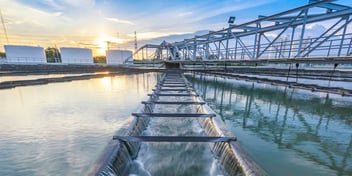Victoria’s new water pricing framework rewards utilities that put customers first
A new water pricing framework that puts customer engagement at the heart of utilities’ submissions has led to fast-tracked approvals and some of the lowest water bills in Australia.
Victoria’s Essential Services Commission (ESC) decided to move away from a one-size-fits-all pricing model to develop its own framework in 2016. The result is PREMO, an approach that encourages water businesses to put customers at the centre of their pricing strategies rather than focus on pleasing the regulator.
Using PREMO, utilities are required to outline their proposed prices and key outcomes based on performance, risk, engagement, management and outcomes. The return on equity depends on how ambitious the submission is, from leading to advanced, standard or basic.
The business does a self-assessment of its submission, which is then reviewed by ESC staff and economic and engineering consultants.
The framework got its first run in this year’s water price review, with the regulator approving prices for 17 of the state’s water utilities. Of these, typical residential bills will fall or remain steady for 13 water corporations over 2018-19.
ESC Director of Price Monitoring and Regulation Marcus Crudden said implementing PREMO was a deliberate attempt to change the way regulatory price setting has been done in Australia.
“As a regulator, we believe we should care most about whether customers are satisfied with the prices and services they’re receiving from water businesses,” Crudden said.
“If the pricing framework is just a debate between a business’ regulatory department and the price regulator, it’s likely to be fairly narrow and miss the things that matter most to customers.”
Encouraging community consultation
Under PREMO, it is impossible for a business to submit a price proposal without engaging with its customers. More than 150,000 people across Victoria were consulted as part of the utilities’ first submissions under the framework earlier this year.
Businesses were free to come up with their own engagement plan – from six-day intensive sessions to formal committees – as long as they justified the type of engagement used.
Crudden said this helped utilities understand what really matters to customers and use this to inform their submissions. As a result, businesses committed to improving services in key areas, including improving communication with customers, extending support for vulnerable customers and even installing drinking fountains in public parks.
“We found the community wanted to be more informed about what water businesses were doing, which led to a number of businesses adopting strategies such as sending SMS notifications if there was a burst on the street,” Crudden said.
“Those types of measures are very popular with customers and give them greater information about what’s occurring.”
ESC Project Manager Customer Engagement – Water Division Lucy Weston said businesses also focused on fairness and equity in their submissions. This included expanding hardship programs and guaranteed service levels, and ensuring rural customers receive the same level of service as their urban counterparts.
Many utilities had assumed large regional cities would not be prepared to subsidise the small towns around them to have the same water quality, yet engagement revealed customers believed everyone should have access to the same standard of water service.
“We’ve seen businesses expand to a whole range of different things, like community payments for beach closures or if water spills into waterways,” Weston said.
“We’ve also seen some big debates and discussions around fairness and equity, and around how pricing and the tariff structure should sit … There have been some interesting things we haven’t come across before that have been proposed out of this.”
Benefits for businesses
As PREMO encouraged water businesses to put forward their best possible offer, the ESC was able to fast-track the submissions of four utilities. This meant there was just 10 weeks between the submission and the ESC’s draft decision saying it would propose to approve the pricing.
Crudden said businesses were encouraged to submit “very short, very sharp price submissions” that made it apparent from the outset whether prices were staying the same, reducing or increasing.
“There’s a lot to be gained from being clear and concise about what you’re offering customers and how you’re going to deliver that,” he said.
“If we thought it was a really good proposal and it met all our requirements, we were prepared to propose to approve it rather than enter a micro examination of narrow issues … That was significant – I don’t think any regulator in Australia, in water or energy, has done any decision that quickly.”
Although PREMO was developed to suit the Victorian water industry, Crudden said elements of the framework could be successful in other states, in particular the increased focus on engagement and on outcomes, rather than outputs.
“We challenged businesses to undertake better engagement and better ways of delivering their services, and the industry really responded to that challenge,” Crudden said.
“It has delivered really good outcomes for consumers in terms of price and proposed service levels … Businesses that perform the best are rewarded for it.”


